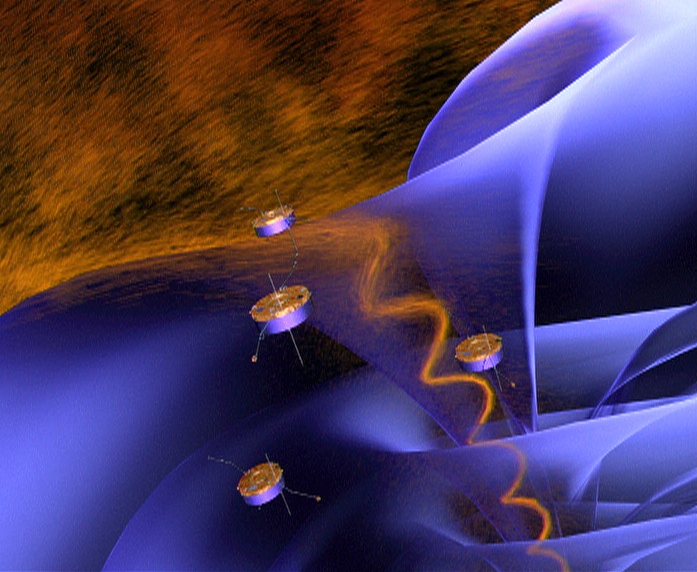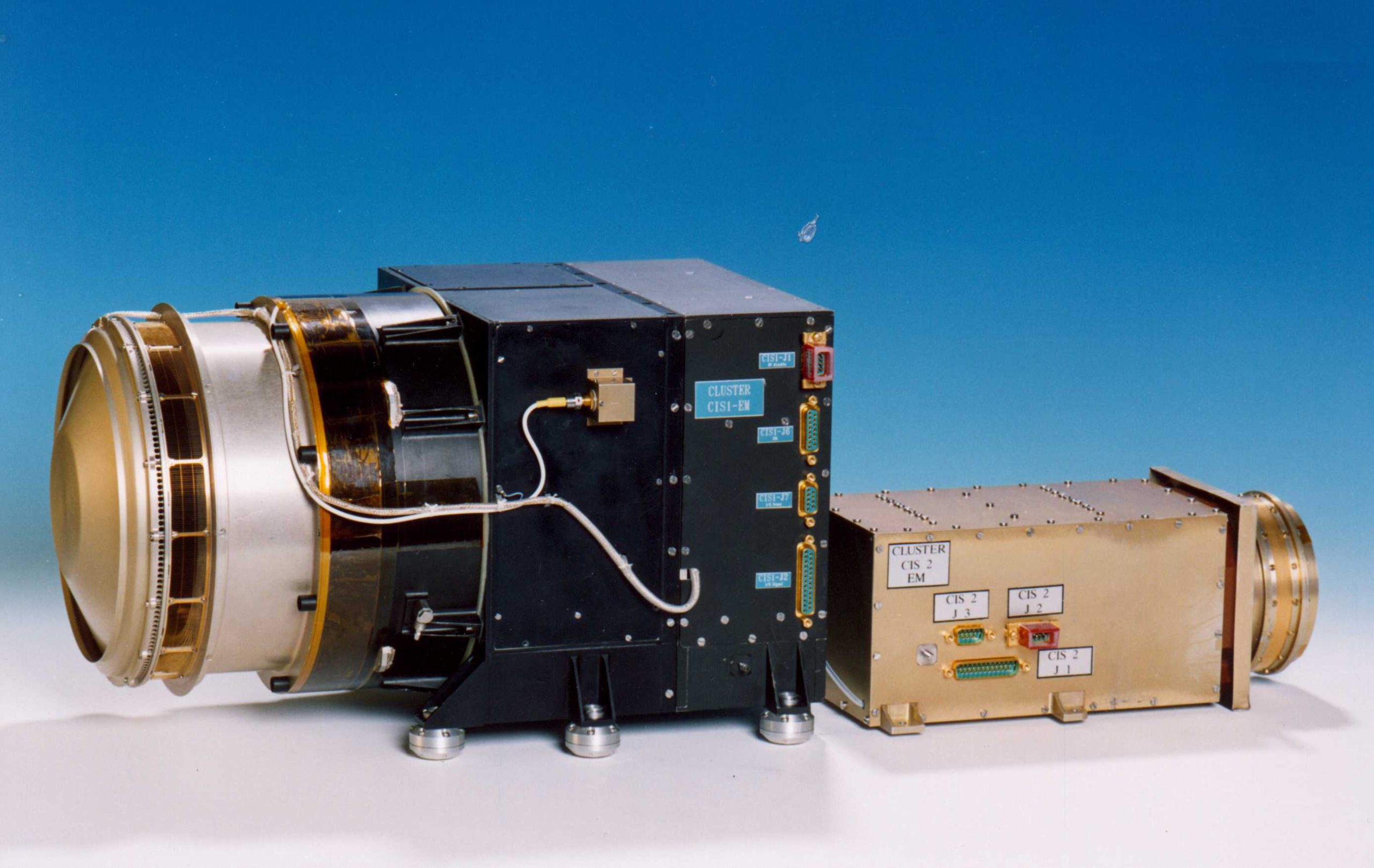Final months for the Cluster mission, after 24 years of success in space
After 24 years of space operations, during which they have greatly advanced our understanding of the dynamics of the Earth’s magnetosphere and its interaction with the solar wind, the first of the four satellites making up the Cluster mission is preparing for a controlled re-entry into the Earth’s atmosphere.
The Cluster mission, prepared by ESA in cooperation with NASA, was launched in 2000. Its scientific objective is to study the Earth’s magnetosphere, its interaction with the solar wind, and the physical processes involved in the various plasma populations trapped in the magnetosphere: sources of these populations, particle acceleration mechanisms, plasma circulation, instabilities, energy dissipation processes, plasma losses, geomagnetic storms… In order to carry out a 3D study, it comprises four identical satellites in a tetrahedral configuration in eccentric orbits, each equipped with 11 instruments.

The Cluster mission, launched in 2000, has been a great success. The initial scientific objectives have been largely exceeded. The high quality of the data acquired, together with the continued smooth operation of the satellites and the main on-board instruments, enabled the mission to be extended in successive stages well beyond the nominal two-year mission initially planned. The Cluster mission, which is still operational, has thus been able to study the Earth’s magnetosphere and its dynamics, covering two complete solar cycles. The harvest of high-resolution data acquired is freely available in the Cluster Science Archive.
IRAP’s contribution to the Cluster mission
Among the 11 instruments on board each of the four satellites is the CIS (Cluster Ion Spectrometry) experiment: two ion spectrometers (CODIF and HIA) on board each of the satellites. The CIS experiment, prepared by an international consortium of laboratories under the prime responsibility of IRAP, measures the composition and distribution functions of ions. It is one of the spearheads of the mission, as evidenced by the very large number (>1300) of scientific publications using its data, including some in prestigious journals such as Nature and Science.

The final phase of the Cluster mission
Following the natural evolution of orbits, and in particular perturbations due to the gravitational attraction of the Sun and Moon, the decrease in perigee altitude becomes inevitable. The first satellite (satellite N° 2, also known as “Salsa”) is due to re-enter the atmosphere on September 8, 2024. This is a controlled re-entry, thanks to orbital maneuvers performed recently (January 2024) by ESA’s space operations team at ESOC. The aim of these maneuvers is to program an atmospheric re-entry over the South Pacific Ocean, a desert sea area presenting no risk to people or shipping. An observation campaign is also planned, to take advantage of the opportunity to improve atmospheric re-entry models, in the context of “sustainable space”.
The other three satellites of the Cluster mission will follow, with atmospheric re-entries, still controlled, in 2025 (satellite N° 1) and 2026 (satellites N° 3 and 4).
Further Resources
- Website dedicated to the Cluster mission
- Cluster Science Archive
- ESA Press Release : « Salsa’s last dance targets reentry over South Pacific«
Contact IRAP
- Iannis Dandouras, iannis.dandouras@irap.omp.eu






